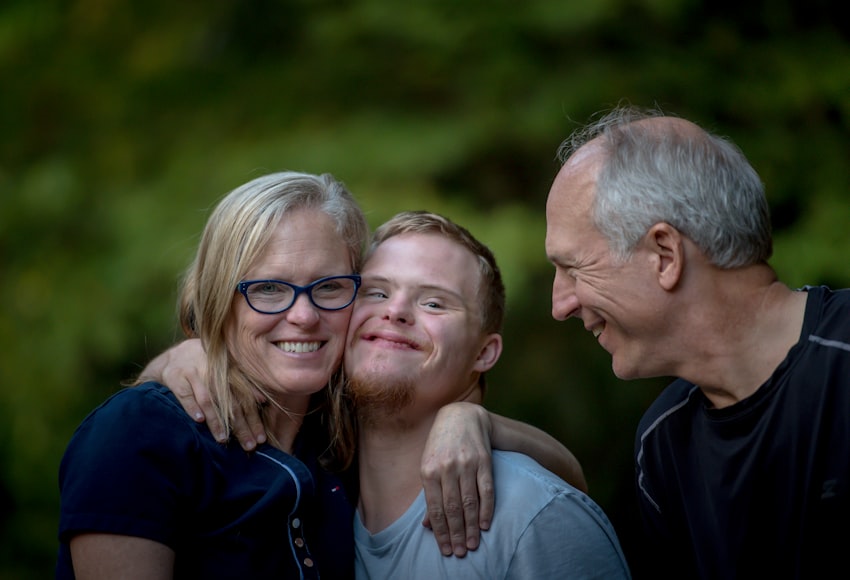Outline for Dog Training to Stop Jumping on People

Introduction
- Jumping on people is a common behavior in dogs, but it can be frustrating and even dangerous.
- This behavior can be caused by excitement, attention-seeking, or fear.
- Addressing the underlying cause is crucial for effective training.
Step 1: Identify the Triggers
- Pay attention to the situations or people that trigger your dog’s jumping behavior.
- Common triggers include: greetings, attention, excitement, and fear.
Step 2: Prevention and Management
- When greeting visitors, keep your dog on a leash to prevent jumping.
- If your dog is excited, divert their attention to a toy or treat.
- Do not reward jumping behavior with attention or physical affection.
Step 3: Training Exercises
1. Sit-Stay:
- Teach your dog to sit and stay on command.
- Practice this in various situations, including when people approach.
2. “Leave It”:
- Teach your dog to “leave it” when they encounter a trigger.
- Use a high-value treat to redirect their attention.
3. Threshold Training:
- Gradually expose your dog to the triggers that cause jumping.
- Start with a distance where they remain calm and reward them for staying at that distance.
- Gradually decrease the distance until your dog can remain calm in close proximity to the trigger.
4. Attention Switching:
- Teach your dog an alternative behavior, such as “sit” or “down,” when they encounter a trigger.
- Reward them for switching their attention to you.
5. Positive Reinforcement:
- Consistently praise and reward your dog for calm and appropriate behavior.
- This helps reinforce the desired behavior and strengthen the bond between you and your dog.
Tips for Success
- Be patient and consistent with training.
- Seek professional help from a certified dog trainer if needed.
- Address underlying causes, such as excitement or fear.
- Avoid punishing your dog, as this can worsen the behavior.
- Use positive reinforcement and make training sessions enjoyable for both you and your dog.
Conclusion
Training a dog to stop jumping on people requires patience, consistency, and understanding the underlying causes of the behavior. By implementing these strategies, you can help your dog overcome this behavior and create a more harmonious relationship with people. Remember, it takes time and effort, but with the right approach, your dog can learn to greet people appropriately and enjoy a happy and well-behaved life.
Identify the Triggers:

As a dog owner, you may have encountered the frustrating experience of your furry friend jumping up on you or other guests. While it may seem like a harmless expression of affection, persistent jumping can become an unwelcome behavior that can lead to injuries or discomfort.
Understanding the underlying triggers that cause your dog to jump is crucial for effective training and behavior modification. Here’s a comprehensive guide to help you identify the situations or people that prompt your dog’s jumping behavior:
1. Excitement and Greeting:
Dogs often jump when they are excited or greeting loved ones. They may perceive your return home, the arrival of guests, or other positive experiences as an opportunity to express their joy and affection.
2. Attention-Seeking:
Jumping can also be a way for dogs to demand attention. They may use it as a strategy to get your focus, petting, or treats. By rewarding your dog’s jumping with attention, you inadvertently reinforce the behavior.
3. Fear or Insecurity:
In some cases, jumping can be a sign of fear or insecurity. If your dog jumps on new people or in unfamiliar situations, it may be trying to protect itself or feel more comfortable.
4. Physical Needs:
Certain breeds of dogs, particularly large or playful ones, may jump as a way to release pent-up energy or get your attention to go outside for a walk or playtime.
5. Lack of Boundaries:
Dogs need clear boundaries to understand appropriate behavior. If you have allowed your dog to jump on you or others in the past, it may see this as acceptable behavior and continue to do so.
6. Learned Behavior:
Jumping can also be a learned behavior. If your dog has observed other dogs jumping on people and receiving positive reinforcement, it may mimic the behavior.
Identifying the Triggers:
To effectively stop your dog’s jumping behavior, it’s essential to identify the specific triggers that cause it. Observe your dog’s behavior closely and take note of any patterns or situations that seem to precede the jumping.
Record the time, location, and people or objects present when your dog jumps. This information will help you create a tailored training plan that targets the specific triggers.
Remember, understanding your dog’s triggers is the first step towards addressing the behavior and promoting a more harmonious relationship.
Establish Clear Boundaries:

Jumping up on people is a common behavioral issue in dogs, but it can be frustrating and even dangerous. Fortunately, with patience and consistency, you can teach your dog to keep their paws on the ground.
Establish Clear Boundaries:
The first step in training your dog to stop jumping on people is to establish clear boundaries. Let your dog know that jumping is unacceptable behavior by ignoring them, turning your body away, or stepping away when they jump. If they continue to jump, remove them from the situation for a brief period.
Use Positive Reinforcement:
Reward your dog for good behavior. When they stay calm and on the ground, give them a treat, praise, or a favorite toy. This will help them associate calm behavior with positive outcomes.
Teach an Alternative Behavior:
Instead of jumping, teach your dog an alternative behavior, such as sitting or lying down. When they encounter someone, cue the alternative behavior and reward them when they perform it correctly.
Use a Leash:
A leash can be a valuable tool for controlling your dog’s behavior. Keep them on a leash when greeting people, and use it to prevent them from jumping. Gently tug on the leash if they start to jump, and redirect them to the desired behavior.
Practice in Controlled Environments:
Start practicing in controlled environments where you can minimize distractions. Have a friend or family member approach your dog and practice the alternative behavior you’ve taught them. Gradually increase the level of distraction as your dog gains confidence.
Maintain Consistency:
Consistency is crucial for effective training. Make sure all family members and visitors follow the same rules and consequences. If one person allows jumping, it can confuse your dog and undermine your efforts.
Be Patient and Persistent:
Training your dog to stop jumping on people takes time and patience. Don’t get discouraged if there are setbacks along the way. Stay consistent with your training, and eventually, your dog will learn the desired behavior.
Additional Tips:
- Avoid using punishment, as it can damage your bond with your dog and make them fear you.
- Keep training sessions short and positive. Aim for 5-10 minutes at a time.
- If your dog is particularly excitable, try redirecting their energy with a toy or a game of fetch before they encounter people.
- Seek professional help from a veterinarian or certified dog trainer if you encounter difficulties or your dog has a history of aggression towards people.
Redirect with Positive Reinforcement:

Jumping on people is a common behavior in dogs, often driven by excitement, attention-seeking, or fear. While it can be endearing at times, it can become a nuisance or even dangerous, especially for children or guests. Traditional methods of stopping this behavior, such as punishment or using a physical barrier, can be counterproductive and may damage your bond with your furry friend.
A more effective and compassionate approach is to use redirect training with positive reinforcement. This method involves teaching your dog alternative behaviors that are desirable and rewarding, while gradually phasing out the unwanted behavior.
Step 1: Identify the Trigger
The first step is to observe your dog and identify the situations or cues that trigger their jumping behavior. This could be greeting people, seeing them on the street, or feeling excited or anxious.
Step 2: Provide an Alternative Behavior
Once you know the triggers, provide your dog with a clear and desirable alternative behavior to jumping. This could be sitting, staying, lying down, or playing with a toy. Make sure the alternative behavior is incompatible with jumping, meaning that your dog cannot do both simultaneously.
Step 3: Reward the Alternative Behavior
When your dog performs the alternative behavior, immediately reward them with a treat, praise, or play. This positive reinforcement will help them associate the desired behavior with a pleasant outcome and encourage them to repeat it.
Step 4: Practice in Different Situations
Start practicing the alternative behavior in a controlled environment with minimal distractions. As your dog becomes more proficient, gradually increase the difficulty by introducing more triggers or distractions.
Step 5: Be Patient and Consistent
Redirect training takes time, patience, and consistency. Don’t get discouraged if your dog doesn’t immediately stop jumping. Keep practicing and rewarding the desired behavior, and eventually, they will learn to replace jumping with the alternative behavior.
Tips for Success:
- Keep training sessions short and positive.
- Use high-value treats that your dog enjoys.
- Be clear and consistent with your commands.
- Avoid punishment or physical barriers, as these can damage your dog’s trust.
- Seek the help of a certified professional dog trainer if you encounter difficulties.
By redirecting your dog’s jumping behavior with positive reinforcement, you can establish a strong bond built on trust and respect. Your furry friend will learn to behave appropriately in social situations and become a well-mannered companion.
Use Leash Management:

Excessive jumping on people is a common but undesirable behavior in dogs. While it may be adorable in puppies, it becomes less endearing as dogs mature. Fortunately, with patience and consistency, it’s possible to train your dog to stop this unwanted behavior. One effective method is leash management.
Understanding Leash Management
Leash management is a training technique that teaches dogs to walk calmly and respectfully on a leash, without excessive pulling or jumping. By controlling your dog’s movement and providing appropriate feedback, you can shape their behavior and teach them the desired response.
Steps for Leash Management:
1. Choose the right equipment: Use a comfortable leash that is the appropriate length for your dog’s size and walking style.
2. Start in a quiet area: Begin training in a calm, low-distraction environment, such as your backyard or a quiet park.
3. Keep the leash loose: Hold the leash loosely enough to allow your dog to walk comfortably without pulling.
4. Teach the “stay” command: Practice the “stay” command with your dog on the leash. Reward them for remaining in a seated or stationary position.
5. Walk with purpose: Start walking with your dog on the leash, maintaining a steady pace and direction.
6. Reward calm behavior: Reward your dog with treats, praise, or petting when they walk calmly beside you without jumping or pulling.
7. Correct inappropriate behavior: If your dog jumps or pulls on the leash, gently and firmly say “no” or “off.” Avoid scolding or physical punishment.
8. Practice regularly: Repeat these steps consistently during walks until your dog learns to walk calmly on the leash.
Tips for Success:
- Be patient and consistent: Training takes time and effort. Don’t get discouraged if your dog doesn’t progress as quickly as you’d like.
- Avoid confrontations: If your dog is jumping out of excitement or nervousness, try to avoid situations that trigger their behavior until you have more control over them.
- Socialize your dog: Exposing your dog to different people and environments can help them learn to control their jumping behavior in various situations.
- Consider using a head halter: A head halter can be an effective tool for controlling dogs that pull or jump excessively.
Conclusion:
Leash management is a valuable tool for training dogs to walk calmly and respectfully on a leash. By controlling their movement and providing appropriate feedback, you can teach your dog to curb their excessive jumping behavior and enjoy harmonious walks together. Remember to be patient, consistent, and reward your dog for their progress.
Practice Calm Greeting:
Unleash the grace and politeness in your furry friend by training them to refrain from jumping on people. Here’s a detailed guide to help you achieve calm and respectful greetings every time:
1. Practice Calm Greeting:
- Teach your dog to associate meeting people with positive experiences.
- Have a friend approach your dog, offering a treat or praise while your dog remains calm and seated.
- Reward your dog immediately for maintaining composure, even if they only sit for a moment.
- Gradually increase the duration of time your dog must stay calm to earn a reward.
2. Establish Boundaries:
- Set clear limits for your dog regarding where they can and cannot jump.
- Designate specific areas where jumping is allowed, such as on a designated play mat or piece of furniture.
- Use physical barriers, such as gates or leashes, to prevent your dog from reaching people.
3. Ignore Jumping Behavior:
- When your dog jumps on people, simply ignore them.
- Turn your back, avoid eye contact, and do not speak to them.
- This will teach your dog that jumping does not get them attention.
4. Redirect to Appropriate Behavior:
- As soon as your dog starts to jump, gently redirect them to an acceptable behavior.
- Tell your dog to sit or stay, and reward them when they obey.
- Use treats or toys to reinforce the desired behavior.
5. Use Positive Reinforcement:
- Reward your dog profusely for all good behavior.
- This could include treats, praise, or playtime.
- Positive reinforcement will motivate your dog to continue behaving appropriately.
6. Consistency:
- Be consistent with your training and expectations.
- All family members and visitors should enforce the same rules regarding jumping.
- If your dog experiences mixed messages, they may become confused and less likely to respond.
7. Patience and Perseverance:
- Training your dog to stop jumping can take time and effort.
- Be patient and persistent, and don’t give up if you don’t see immediate results.
- With consistent training and positive reinforcement, your dog will eventually learn to greet people calmly and politely.
Remember, training your dog is an ongoing process that requires patience, consistency, and positive reinforcement. By implementing these techniques, you can turn your exuberant jumper into a well-mannered companion who greets people with grace and respect.
Introduce Distractions Gradually:
Jumping up on people is a common problem behavior in dogs, but it can be easily corrected with consistent training and patience. Here’s a step-by-step guide to help you train your dog to stop jumping:
1. Establish Basic Obedience Commands
Before teaching your dog to stop jumping, it’s essential to establish basic obedience commands such as “sit,” “down,” and “stay.” These commands provide a foundation for controlling your dog’s behavior.
2. Create a Safe and Positive Environment
Choose a quiet spot where your dog is comfortable and unlikely to be distracted. Keep training sessions short (5-10 minutes) and positive, rewarding your dog with treats or praise for good behavior.
3. Practice in Low-Distraction Situations
Start training in a low-distraction environment, such as your home. Ask your dog to sit or down, and reward them for remaining calm. Gradually increase the distance between you and your dog to challenge their behavior.
4. Redirect Jumping Behavior
When your dog jumps, immediately redirect their behavior by saying a firm “no” and offering an alternative. Lead them to a toy or mat and reward them for engaging in appropriate behavior.
5. Introduce Distractions Gradually
Once your dog has mastered basic obedience commands, gradually introduce distractions to challenge their jumping behavior in various situations. Begin with low-level distractions, such as a toy or another person at a distance.
6. Use Negative Reinforcement
Negative reinforcement is a technique that involves removing something desirable to discourage unwanted behavior. When your dog jumps, lightly tap them on the nose with a rolled-up newspaper or spray them with a water bottle (do not aim at their head).
7. Be Consistent and Patient
Consistency is key in training. Practice regularly and reward your dog every time they exhibit desired behavior. Training may take time and patience, but with consistency, you will eventually see results.
8. Seek Professional Help if Necessary
If you are struggling to train your dog on your own, consider seeking professional help from a certified dog trainer or veterinarian. They can provide personalized guidance and support to address your dog’s specific behavior issues.
Conclusion
Training your dog to stop jumping on people requires patience, consistency, and positive reinforcement. By following these steps and adapting them to your dog’s individual needs, you can overcome this common behavior issue and enjoy a well-behaved companion. Remember, every dog is different, so be patient and enjoy the training process with your furry friend.
Avoid Physical Punishment:
Jumping up on people is a common problem among dogs, but it can be easily corrected with proper training techniques. Here’s a step-by-step guide to help you train your furry friend to keep their paws on the ground:
1. Identify the Cause:
Before you start training, it’s important to understand why your dog is jumping. Is it for attention, excitement, or fear? Knowing the cause will help you tailor your training approach.
2. Avoid Physical Punishment:
Never hit or punish your dog for jumping, as this can damage your relationship and make the problem worse. Instead, use positive reinforcement and gentle redirection techniques.
3. Teach an Alternative Behavior:
Train your dog to sit or lie down when they see someone. Reward them with treats, praise, or playtime whenever they offer the desired behavior.
4. Practice in Different Situations:
Start practicing in a controlled environment with minimal distractions. Gradually increase the difficulty by practicing in more challenging situations, such as with strangers or when your dog is excited.
5. Be Consistent:
Consistency is key in dog training. Everyone in the family should use the same commands and techniques. If you allow your dog to jump sometimes, it will confuse them and hinder training progress.
6. Use a Leash:
A leash can help control your dog’s behavior and prevent them from jumping. When you approach someone, keep your dog on a short leash and give the “sit” or “lie down” command.
7. Ignore Jumping:
When your dog jumps on you, simply ignore them. Do not make eye contact, talk to them, or pet them. Eventually, they will learn that jumping does not get them attention.
8. Use Time Outs:
If ignoring doesn’t work, try using time outs. When your dog jumps, calmly say “No” and remove them to a quiet spot for a few minutes. This will help them understand that jumping is not acceptable.
9. Seek Professional Help:
If you are struggling to train your dog to stop jumping on people on your own, consider seeking professional help from a certified dog trainer or veterinary behaviorist. They can assess your dog’s behavior and develop a customized training plan.
Remember:
Training your dog to stop jumping on people takes time and patience. Be consistent, positive, and avoid harsh punishment. With the right approach, you can teach your furry friend to be calm and well-mannered around others.
Consistency is Key:
As dog owners, we adore our furry companions, but their enthusiastic greetings can sometimes turn into an unwelcome spectacle. Jumping on people, while seemingly harmless, can be overwhelming, especially for those who fear dogs or simply don’t appreciate the canine embrace. To ensure a harmonious coexistence between our pets and others, it’s essential to train our dogs to keep their paws on the ground.
Consistency is the cornerstone of successful dog training, and this principle holds especially true when it comes to eliminating jumping behavior. By enforcing boundaries and training techniques consistently with everyone who interacts with your dog, you can effectively break the habit and foster a well-behaved companion.
Here’s how to cultivate consistency in your dog training:
-
Establish Clear Boundaries: Communicate to everyone who comes into contact with your dog that jumping is not acceptable. Inform them to immediately stand up, turn away, and avoid eye contact with the dog if it attempts to jump.
-
Practice Regularly: Dedicate time each day to training sessions where you practice the desired behavior. Use treats or praise to reward your dog for remaining calm and not jumping, and gently redirect them if necessary.
-
All Family Members on Board: Involve every member of your household in the training process. Ensure that children, teenagers, and other family members are aware of the boundaries and follow the training protocols consistently.
-
Involve Guests: When guests visit, take the opportunity to train your dog in their presence. Explain the rules to your guests beforehand and ask them to cooperate by enforcing the same boundaries.
-
Don’t Give In: It’s tempting to give in to those adorable puppy dog eyes when they jump up for attention. However, consistency is key. If you succumb even once, your dog will learn that jumping is sometimes acceptable, and your training efforts will be compromised.
-
Stay Patient: Dog training requires time and patience. Don’t get discouraged if your dog doesn’t immediately grasp the concept. Continue practicing and rewarding desired behaviors while gently correcting inappropriate ones.
Remember, consistency in enforcing boundaries and training techniques is paramount to eliminating jumping behavior. By involving everyone who interacts with your dog and staying committed to the process, you will create a well-behaved companion who exemplifies both charm and courtesy.

















